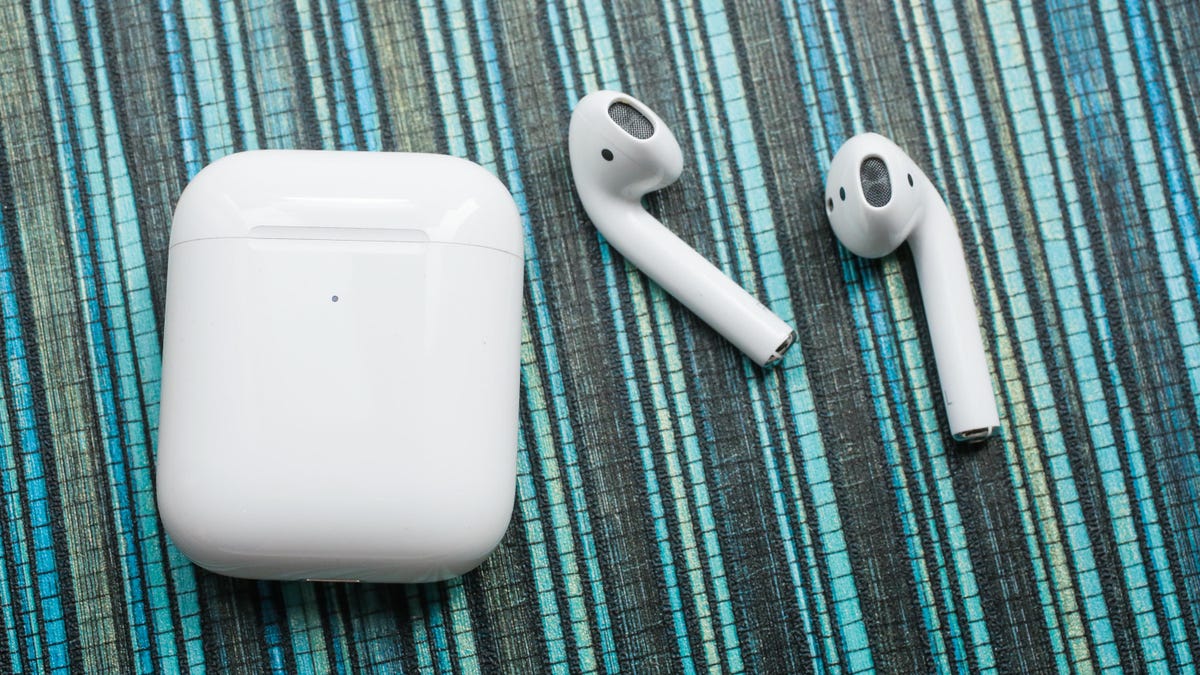How to connect your AirPods to any Mac in under a minute
If your AirPods earphones are already connected to your iPhone, follow these steps to pair them with your MacBook Air, MacBook Pro or any other Mac.

Thanks to iCloud, connecting your AirPods to a Mac couldn't be easier.
Apple's AirPods have quickly become a ubiquitous symbol for wireless earphones. Now that the iPhone 11 and 11 Pro are out, it's likely that more people will opt to grab a pair of the $159 headphones with their shiny new iDevices. But even if you have mastered using your AirPods on your iPhone 11, there are still many other devices you can use them with, such as an iPad Pro , iPod Touch or Mac. If you have an iCloud account, Apple has made it super easy to use your AirPods to pair and set up your MacBook Air and your iPhone 11 Pro Max in less than a minute.
Read more: Apple unveils AirPods Pro with new design and noise cancellation
Your AirPods will automatically connect to your Mac
If you've already set up your AirPods with your iPhone and your Mac is signed in to iCloud with the same Apple ID, then you should be good to go. To check, place your AirPods in your ears and check either the Bluetooth or volume drop-down menu from the menu bar on your Mac. Then choose AirPods from the list.
Read more: Best AirPods accessories
To quote Guns N' Roses, "it's so easy."
What if my AirPods don't pair on their own?
If you don't see your AirPods listed, there are a few things you need to do.
1. Charge your AirPods. Make sure those little guys have all the power they need.
2. Open Bluetooth preferences on your Mac. You can either go to the Bluetooth drop-down menu from your menu bar and select Open Bluetooth Preferences… or go to the Apple menu, select System Preferences and click Bluetooth.
3. Double-check that Bluetooth is actually on. Because you never know -- things happen!
4. Put both AirPods in their charging case and open the lid.
5. Press and hold the setup button on the back of the case until the status light flashes white.
6. Go back to the Bluetooth preferences window on your Mac and select AirPods from the Devices list.
7. Finally, click Connect.
If you'd like to follow along or see us connect a pair of AirPods step-by-step, watch the video below:
If sound still plays from your Mac speakers, check either the Bluetooth or volume drop-down menu in the menu bar and make sure your AirPods are selected as the output.
Now you can listen to music from your phone or from your Mac without changing headphones. And that's how the world is meant to work.
If you still want more nuance and control while using your AirPods on your Mac, there are a couple of third-party apps that can assist you. Read more here: Better Bluetooth: 2 apps for using AirPods with a Mac.

